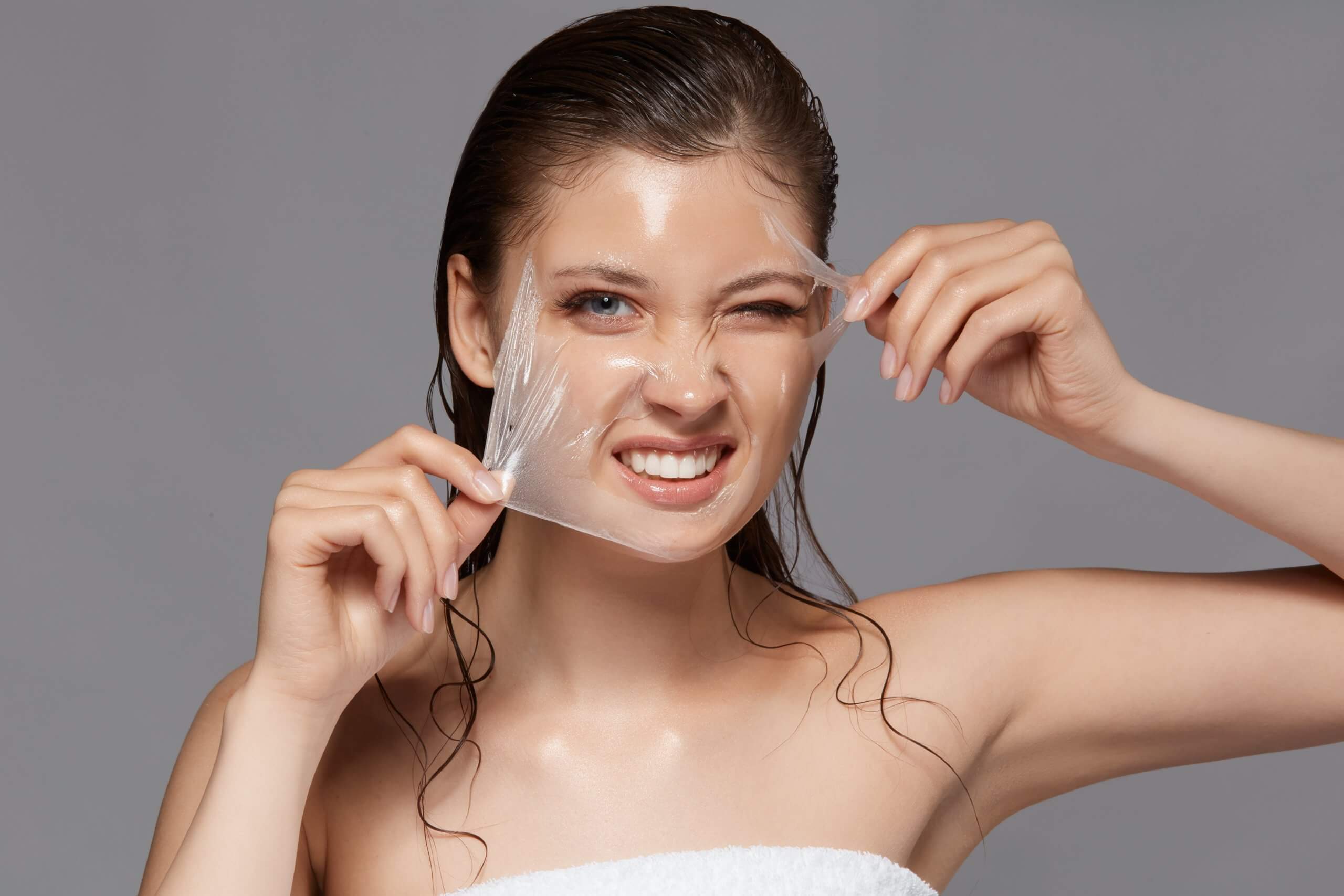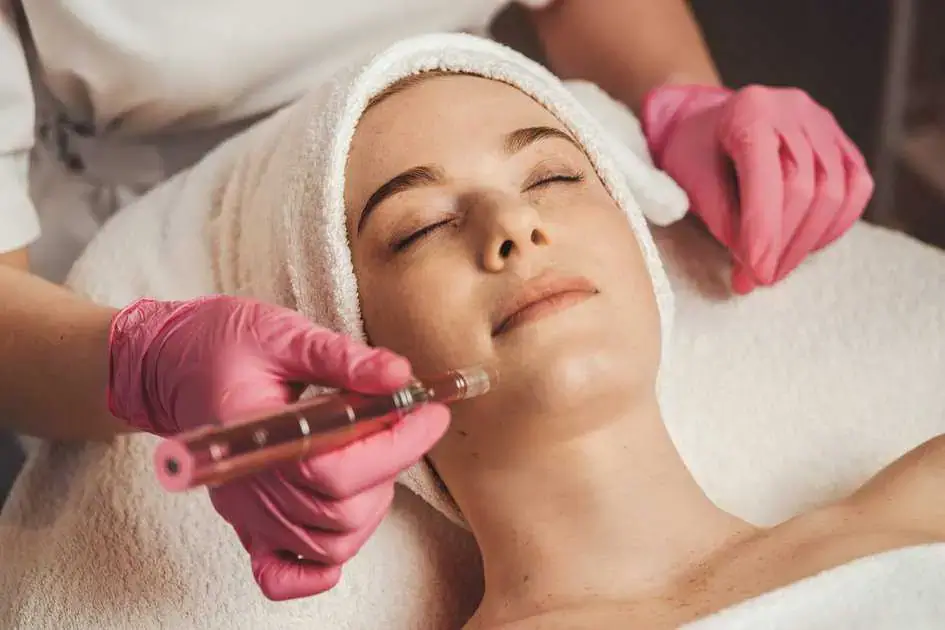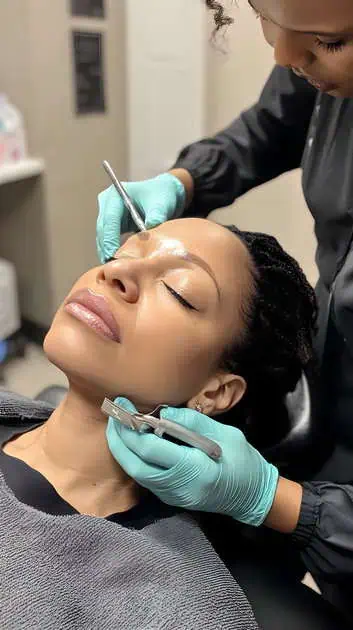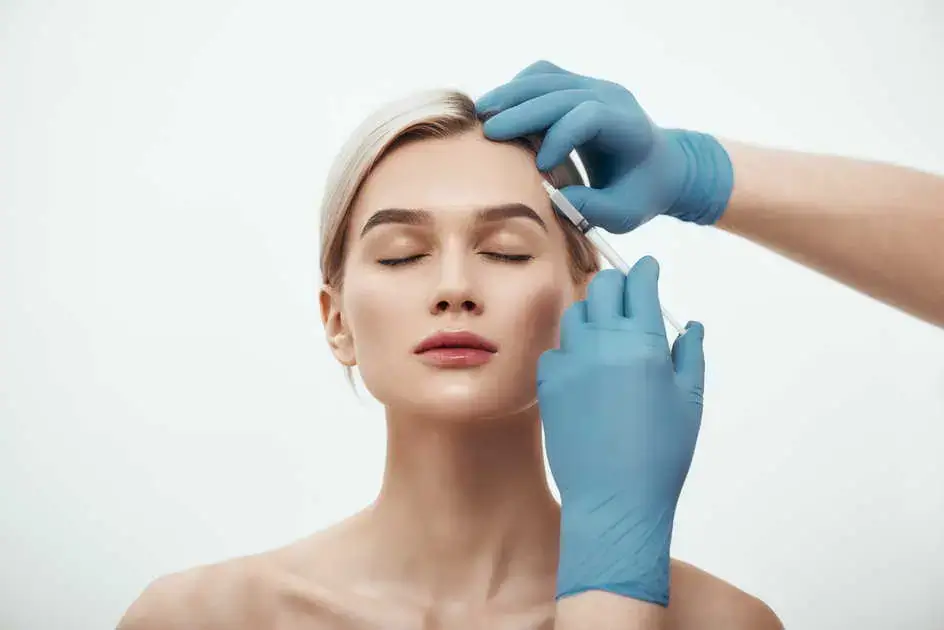Chemical Peels
Chemical peels are cosmetic procedures used to enhance the appearance of the skin on the face, neck, or hands. They involve the application of a chemical solution to the skin, which causes it to exfoliate and eventually peel off. This process removes the outermost layers of dead skin cells, revealing a smoother, healthier-looking complexion underneath.
Chemical peels can be categorized into three main types based on their depth:
- Superficial Peels: These peels use mild acids, such as alpha-hydroxy acids (AHAs) or glycolic acid, to gently exfoliate the epidermis. Superficial peels are usually used to improve skin texture, reduce fine lines and wrinkles, and enhance the skin’s overall appearance. They may require multiple treatments for optimal results, and this type of peel has little to no downtime or recovery.
- Medium Peels: Medium-depth peels penetrate the outer and middle layers of the skin (epidermis and dermis). They typically use trichloroacetic acid (TCA) or a combination of TCA and other acids to remove damaged skin cells. Medium peels can effectively treat more noticeable skin concerns, such as age spots, moderate wrinkles, and uneven skin tone. This peel may require some downtime for the skin to heal, and there might be some temporary redness, swelling, and peeling.
- Deep Peels: Deep peels penetrate the deeper layers of the skin to achieve more significant results. They usually use phenol, a strong acid that can remove damaged skin cells and stimulate collagen production. Deep peels are typically recommended for severe skin conditions, such as deep wrinkles, scars, and certain precancerous growths. Due to the intensity of the treatment, deep peels require a more extended recovery period, and there may be more noticeable side effects, such as redness, swelling, and peeling, that can last several weeks.
Acne Breakouts Causes
Acne breakouts, also known as acne vulgaris, can have several causes. It occurs when dead skin cells, oil, and bacteria clog hair follicles leading to inflammation and forming pimples, blackheads, whiteheads, or cysts. Some common causes and contributing factors of acne breakouts include:
- Excess Oil Production: Increased sebum production by the sebaceous glands is a primary factor in acne development. Hormonal changes, especially during puberty, can stimulate the sebaceous glands to produce more oil. However, excessive oil production can occur at any age, contributing to clogged pores and acne breakouts.
- Clogged Pores: When dead skin cells do not shed properly, they can mix with sebum and plug within the hair follicles, forming comedones (blackheads and whiteheads). These clogged pores create an ideal environment for the growth of acne-causing bacteria.
- Bacterial Infection: Propionibacterium acnes (P. acnes) is a bacteria that naturally resides on the skin. However, when excess sebum and dead skin cells clog the pores, P. acnes can multiply rapidly and cause inflammation and infection, leading to red, swollen pimples.
- Hormonal Changes: Hormonal fluctuations, particularly during puberty, menstrual cycles, pregnancy, and menopause, can trigger or worsen acne breakouts. Increased levels of androgens (male hormones), such as testosterone, can stimulate the sebaceous glands and increase oil production.
- Diet: Although the direct impact of diet on acne is still being studied, some evidence suggests that certain dietary factors may influence acne breakouts in susceptible individuals. High-glycemic-index foods, dairy products, and foods rich in saturated and trans fats have been offered as potential triggers for acne in some people.
- Stress: Chronic stress affects hormone levels and potentially worsens acne breakouts. Stress triggers the release of cortisol, which increase oil production and inflammation in the skin, leading to acne flare-ups.
- Medications and Cosmetics: Certain medications, such as corticosteroids and some cosmetic products containing oils or comedogenic ingredients, may contribute to acne breakouts in some individuals. It is essential to check product labels and choose non-comedogenic or oil-free options if acne-prone.
- Genetics: There is a genetic component to acne susceptibility. If your parents or close family members have a history of acne, you may also be more prone to developing it.
How to determine an Acne-Prone Skin?
Determining whether you have acne-prone skin involves assessing various factors related to your skin’s characteristics and the frequency of acne breakouts. Here are some signs that may indicate acne-prone skin:
- Frequent Acne Breakouts: If you experience regular or recurrent acne breakouts, including pimples, blackheads, whiteheads, or cysts, it suggests that your skin is prone to acne. Pay attention to the frequency and severity of your breakouts.
- Oily Skin: Excess oil production is a common characteristic of acne-prone skin. If your skin tends to feel greasy or shiny, particularly in the T-zone (forehead, nose, and chin), it indicates an overactive sebaceous gland activity.
- Clogged Pores: If you frequently notice clogged pores, blackheads, or whiteheads on your skin, it suggests that your skin tends to develop acne. These clogged pores result from dead skin cells, sebum, and bacteria trapped within the hair follicles.
- Inflammation and Redness: Acne-prone skin often exhibits signs of inflammation, such as redness, swelling, and tenderness around the acne lesions. This results from the immune response to the bacteria present in the clogged pores.
- Post-Inflammatory Hyperpigmentation (PIH): After an acne breakout, you may notice dark spots or discoloration in the affected area. These are known as post-inflammatory hyperpigmentation and are more common in acne-prone skin.
- Sensitivity to Certain Products: If your skin is reactive and easily irritated by certain skincare products, it may indicate acne-prone skin. Some ingredients, such as fragrances, dyes, and harsh chemicals, can exacerbate acne breakouts or cause skin irritation.
- Family History: Acne can have a genetic component. If your close family members have a history of acne, there is a higher likelihood that you may also have acne-prone skin.
Benefits of Chemical Peels in Acne Breakouts
Chemical peels can be beneficial in the treatment of acne breakouts. Here are some potential benefits of chemical peels for acne-prone skin:
- Exfoliation: Chemical peels work by removing the outermost layers of dead skin cells, promoting exfoliation. This process helps unclog pores and removes the buildup of dead skin cells, oil, and bacteria that contribute to acne breakouts.
- Deep Cleansing: Chemical peels penetrate the skin and help remove excess oil, sebum, and debris from the pores. By clearing out the pores, chemical peels can reduce the occurrence of blackheads, whiteheads, and other types of acne lesions.
- Reduction of Acne Lesions: Chemical peels can help reduce the appearance of active acne lesions, including pimples and inflammatory acne. By exfoliating the skin and eliminating dead cells and bacteria, chemical peels can help speed healing and promote clearer skin.
- Improvement in Skin Texture: Chemical peels can smooth the skin’s texture by removing rough, uneven skin and promoting the growth of new, healthier skin cells, resulting in a more refined and smoother complexion.
- Reduction of Post-Inflammatory Hyperpigmentation (PIH): Chemical peels can help fade dark spots and hyperpigmentation caused by acne breakouts. By promoting skin cell turnover, chemical peels can accelerate the fading of PIH, leading to a more even skin tone.
- Stimulates Collagen Production: Some chemical peels, mainly medium and deep peels, can stimulate collagen production in the deeper layers of the skin, which provides the skin with a firmer and healthier structure.
- Enhanced Effectiveness of Skincare Products: Removing the outermost layer of dead skin cells can improve the penetration and effectiveness of topical skincare products, allowing acne-fighting ingredients to penetrate deeper and provide better results.
Read Also about : How Can Chemical Peels Help You Achieve Smooth, Youthful Skin
Maximizing these benefits also means trusting a medical professional. Trust SOSA Medical Aesthetics and contact them to start your chemical peel journey now!











